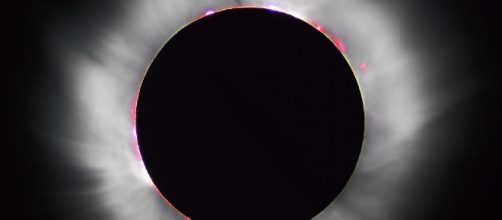The most awaited celestial event this year known as the Great American Eclipse will finally be witnessed on Monday, August 21 and will occur exclusively in the United States. On the other hand, if you are one of those who cannot observe this captivating darkness casts by the Moon, you could watch the live streams that will be hosted by NASA.
There will be two live streams, the first where people can view the solar eclipse across America. Meanwhile, the second live stream will feature the view in the path of totality for the 2017 eclipse and the 2024 eclipse.
These will be aired from Carbondale, Illinois.
These live-streaming videos will be unveiled on Monday from NASA television and could be viewed on the NASA page.
NASA's live streams
NASA’s live stream titled the "Eclipse Preview Show," will run from 12 p.m. to 4 p.m. EDT. Meanwhile, the "Solar Eclipse: Through the Eyes of NASA" will be featured at 1 p.m. EDT. The live stream will highlight the path of totality of the eclipse that will take place in the United States, from Oregon to South Carolina.
The space agency will present images that are encapsulated before, during and after the eclipse taken by 11 spacecraft. It will also feature three NASA research aircraft, about 57 high-altitude balloons, specially-modified telescopes, and satellites.
It will also present the astronauts in the International Space Station. This will be a celestial treat for those space enthusiasts.
Live Science also reports that you could also watch NASA’s "Live from Carbondale" live stream. This will start at 11:45 a.m. and run until 4:15 p.m. EDT. It will feature the live coverage of the eclipse, an encounter with scientists, educational activities, and telescope feed, among others.
You can also watch the live streams on Live Science website.
The first total solar eclipse in many years
This Great American Eclipse will be the first total solar eclipse to traverse the United States from West Coast to East Coast since Feb. 26, 1979. A Total Solar Eclipse transpires when the apparent diameter of the moon is bigger than the sun.
It obstructs the sunlight, in which the day turns into darkness. Meanwhile, a partial eclipse will be visible in other countries.
To those who will witness the total solar eclipse personally and directly, it is recommendable to protect your eyes. Experts said that looking directly at the sun could harm your eyes. It is advisable not to gaze at the sun directly during its eclipse. It is safe and sound to look at it during the period of totality when the moon’s shadow has obstructed the light.


